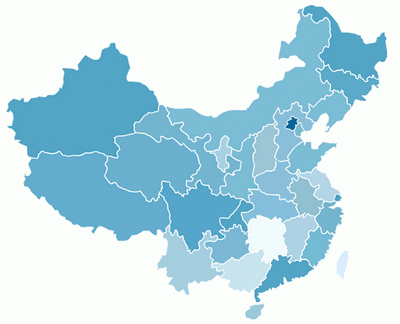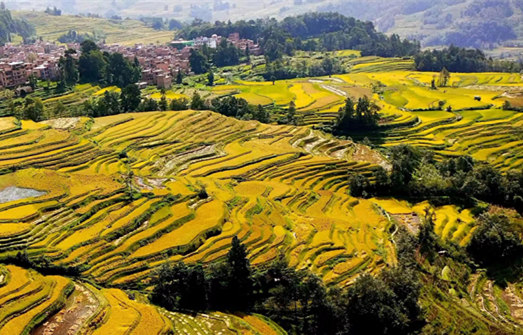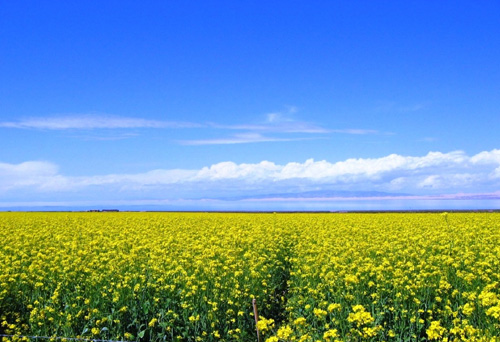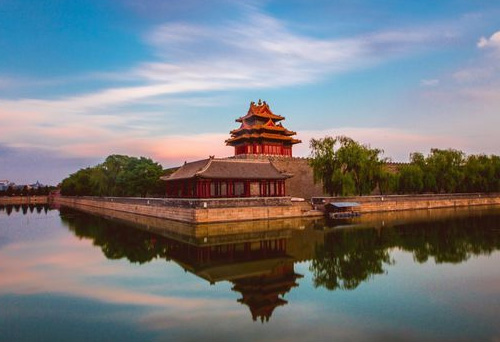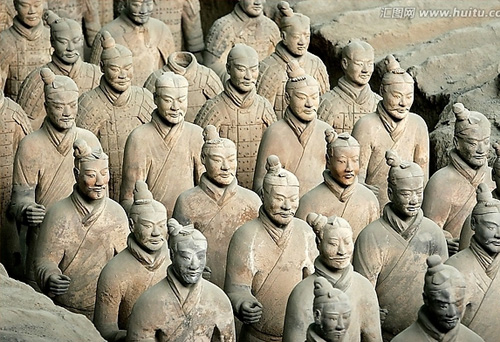Chengdu history
Chengdu history
Chengdu is a famous cultural city with a history of more than 2300 years.
Chengdu has been the important city in southeastern since the ancient time: It was the capital of Kingdom of Shu Han during the Three Kingdoms period and the capital of Former Shu and Later Shu, so it has many cultural relics and was named as the national historical and cultural city by state council in 1982. Since the Han (206B.C.-220) and Tang (618-907) Dynasties when its handicraft industry flourished, Chengdu has been famous for its brocades and embroideries. Shu embroideries still enjoy a high reputation for their bright colors and delicate designs, ranking among the four main embroideries in China. Chengdu was the place where the bronze culture, an indispensable part of ancient Chinese culture, originated, the place where the Southern Silk Road started, and the place where the earliest paper currency, Jiaozi (not the dumpling!), was first printed.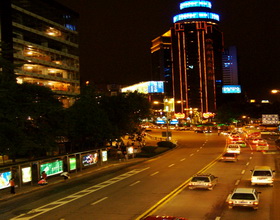
It is the earliest developed city in southwest region of our country and is one of the 24 histories and cultural cities of the whole country. Chengdu has the history of more than 2300 years. As early as the fourth century B.C., Shu Country moved the capital to Chengdu. It was called Chengdu up to now. About in the end of the period of Chunqiu, the Kaiming Emperor who was the fifth emperor in ancient Shu Dynasty moved the capital from the Fan country of Guang which is Shuangliu country to Chengdu and built up the city. They built up one earliest Shao City which located the place of the Junyamen, presented the rectangular and was more order. There are main the building which were Ganlan type outside the city. There were few soil walls. Qin Country died out the Shu Country and set the Shu country in 316 B.C. In 311 B.C., Zhang Yi and Zhang Rou carried on large-scale building to Chengdu. They depended on the type of Xianyang to build cities which were Chengdu, Picheng and Lingong. The gir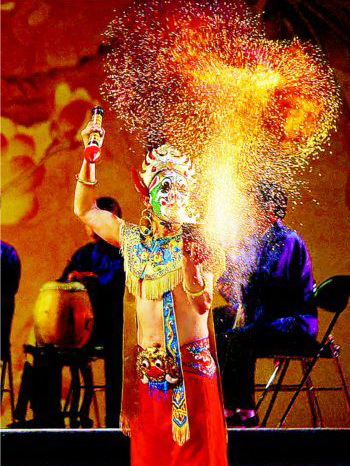 th of Chengdu city was 12 li long, 7 unit of length high. The Tai city which was a district where the officers lived and worked was in east. The Shao city which was a business district where set up shop the row to spread, the business is thriving, establishing the salt iron officers collected the salt iron tax, the city officers management market, collected the business tax was in west. The Chengdu city just built up formaly in the year. The Chengdu city just built up formally in the year. Through the long time of management, Chengdu became the well-known business city in Qin Dynasty.
th of Chengdu city was 12 li long, 7 unit of length high. The Tai city which was a district where the officers lived and worked was in east. The Shao city which was a business district where set up shop the row to spread, the business is thriving, establishing the salt iron officers collected the salt iron tax, the city officers management market, collected the business tax was in west. The Chengdu city just built up formaly in the year. The Chengdu city just built up formally in the year. Through the long time of management, Chengdu became the well-known business city in Qin Dynasty.
Chengdu's name is written that it was a history that used the West Zhou to found a capital by the Taipinghuanyuji. The army of Qin Country entered the Shu and the Shu Country died out in 316 B.C. In order to strengthen the centralization system, Sima Chu who was the great commander of Qin Country set the Shu country in Sichuan, rebuilt the Chengdu city and took it as t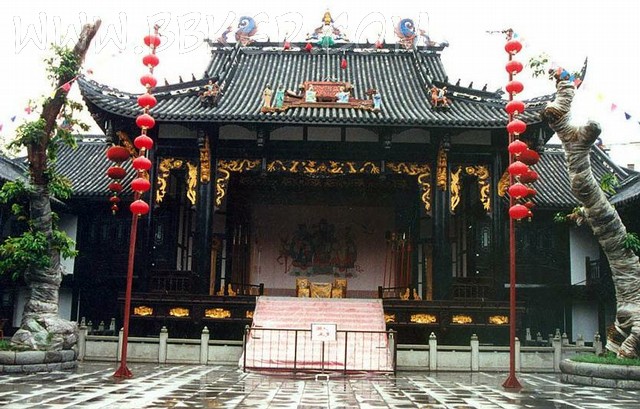 he capital of Shu country. Hanwu Emperor established 13 states in the whole country in 106 B.C. Chengdu governed Ba, Shu, Guanghan and Jian. Chengdu replaced the Zhongyuan to call the Tianfu at the end of the Qin Dynasty and the beginning of the Han Dynasty. At the end of the West Han Dynasty, Gongshun Su called the emperor and changed Chengdu to be Chengjia. At the end of the East Han Dynasty, Liu Yan was the officer of Yi State and moved to Chengdu and took Chengdu as the capital of the states and counties. In the period of West Han Dynasty, the cotton racy in Chengdu was very flourishing, established the Jin officer, so Jin officer city also was called Jin city. Other handicraft industries were prosperous such as salt, iron, weapon, gold and silver machine and lacquer ware...etc. The business in Chengdu in Qin Dynasty and Han Dynasty was flourishing. Chengdu had become the big city in Qin Dynasty. The population was about 400 thousand and Chengdu became one of six big cities which were Changan, Luoyang, Handan, Lintiao, Wan and Chengdu of the whole country in the West Han Dynasty. Shao city became the most flourishing city area in business in Chengdu. The merchandise piled up like the mountain, the store and the goods were more.
he capital of Shu country. Hanwu Emperor established 13 states in the whole country in 106 B.C. Chengdu governed Ba, Shu, Guanghan and Jian. Chengdu replaced the Zhongyuan to call the Tianfu at the end of the Qin Dynasty and the beginning of the Han Dynasty. At the end of the West Han Dynasty, Gongshun Su called the emperor and changed Chengdu to be Chengjia. At the end of the East Han Dynasty, Liu Yan was the officer of Yi State and moved to Chengdu and took Chengdu as the capital of the states and counties. In the period of West Han Dynasty, the cotton racy in Chengdu was very flourishing, established the Jin officer, so Jin officer city also was called Jin city. Other handicraft industries were prosperous such as salt, iron, weapon, gold and silver machine and lacquer ware...etc. The business in Chengdu in Qin Dynasty and Han Dynasty was flourishing. Chengdu had become the big city in Qin Dynasty. The population was about 400 thousand and Chengdu became one of six big cities which were Changan, Luoyang, Handan, Lintiao, Wan and Chengdu of the whole country in the West Han Dynasty. Shao city became the most flourishing city area in business in Chengdu. The merchandise piled up like the mountain, the store and the goods were more.
Doujiangyan which is a hydraulic project and keeps using fo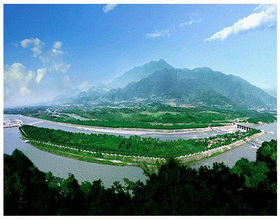 r more than 2000 years was built up about in 250 B.C. firstly. The braiding machine was used by foot in West Han Dynasty, people in Chengdu used the ways of block printed in Tang Dynasty and Tang Shenwei who was the famous doctor in North Song Dynasty wrote the medical dictionary which was Jingshizhengleibeijichaoben in 1082. These achievements promoted consumedly social and the development of the economy at that time. The next, the main performances of contribution make in the economy and the humanities aspects: The businessman here consociation published the earliest banknotes which were called Jiaozi in the world, the authorities established the earliest management savings bank which was called Jiaoziwu in the world in the period of Song Dynasty. Wenweng who was the officer in Chengdu built up the earliest government-operated school which was called Wenweng
r more than 2000 years was built up about in 250 B.C. firstly. The braiding machine was used by foot in West Han Dynasty, people in Chengdu used the ways of block printed in Tang Dynasty and Tang Shenwei who was the famous doctor in North Song Dynasty wrote the medical dictionary which was Jingshizhengleibeijichaoben in 1082. These achievements promoted consumedly social and the development of the economy at that time. The next, the main performances of contribution make in the economy and the humanities aspects: The businessman here consociation published the earliest banknotes which were called Jiaozi in the world, the authorities established the earliest management savings bank which was called Jiaoziwu in the world in the period of Song Dynasty. Wenweng who was the officer in Chengdu built up the earliest government-operated school which was called Wenweng
Stone House in China in 141 B.C. The literature art in Chengdu got to the very high level in West Han Dynasty. Sima Xiangru, Mei Cheng, Jia Yi, Yang Xiong, Wang Bao etc. established the founda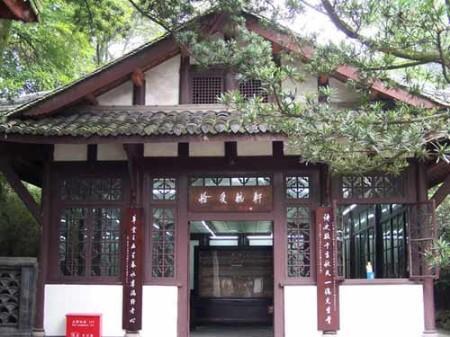 tion of Hanfu. Sima Xiangru, Yang Xiong and Wang Bao were the most famous in the whole country at that time. Meng Xu who was an emperor of Houshu wrote the first New Year couplet which was Fengniannayuqing, Jiajiehaochangchun in China in the period of Wudai. Changxu compiled existing the earliest chorography book which was Huayinguozhi in China before 355 A.D. Zhao Chongzai who was a person of Houshu edited the first phrase which was Huajianji in Chinese literary history. In the 10th centry, Huang Quan who was a painter of Chengdu founded the Chinese delicate strokes flowers and birds painting parties firstly. Huang Xu created the Hanlin Painting collage. The demand emphasize what to point out is: The Paiyoubai Dramas of Cheng were very outstanding as early as in Han Dynasty. The singing tomb figures in Han Dynasty which come from Chengdu the shape is alacrity, unexcelled in the Chinese of the same kind cultural object, they are the precious gifts to the world, the body appear the ancient cultural essence at the same time. The economic of Chengdu was flourishing, the cultural was prosperity, and the Buddhism was popular widely in the period of Sui Dynasty and Tang Dynasty. Chengdu became the third of the big famous cities which were Changan, Yangzhou, Chengdu and Dunhuang in the whole country. The agriculture, silk industry, handicraft industry, business are flourishing. The deckle and the art preservative of all art development are very quick. The economic position of Chengdu was second and the economic position of Yangzhou was the first. The embroider of Chengdu was one of the three big famous embroiders in the whole country. The embroider of Chengdu was the titbit. The yield was first in the whole country.
tion of Hanfu. Sima Xiangru, Yang Xiong and Wang Bao were the most famous in the whole country at that time. Meng Xu who was an emperor of Houshu wrote the first New Year couplet which was Fengniannayuqing, Jiajiehaochangchun in China in the period of Wudai. Changxu compiled existing the earliest chorography book which was Huayinguozhi in China before 355 A.D. Zhao Chongzai who was a person of Houshu edited the first phrase which was Huajianji in Chinese literary history. In the 10th centry, Huang Quan who was a painter of Chengdu founded the Chinese delicate strokes flowers and birds painting parties firstly. Huang Xu created the Hanlin Painting collage. The demand emphasize what to point out is: The Paiyoubai Dramas of Cheng were very outstanding as early as in Han Dynasty. The singing tomb figures in Han Dynasty which come from Chengdu the shape is alacrity, unexcelled in the Chinese of the same kind cultural object, they are the precious gifts to the world, the body appear the ancient cultural essence at the same time. The economic of Chengdu was flourishing, the cultural was prosperity, and the Buddhism was popular widely in the period of Sui Dynasty and Tang Dynasty. Chengdu became the third of the big famous cities which were Changan, Yangzhou, Chengdu and Dunhuang in the whole country. The agriculture, silk industry, handicraft industry, business are flourishing. The deckle and the art preservative of all art development are very quick. The economic position of Chengdu was second and the economic position of Yangzhou was the first. The embroider of Chengdu was one of the three big famous embroiders in the whole country. The embroider of Chengdu was the titbit. The yield was first in the whole country.
Chengdu is the source of the ways of block printed in China. Most of handouts came from C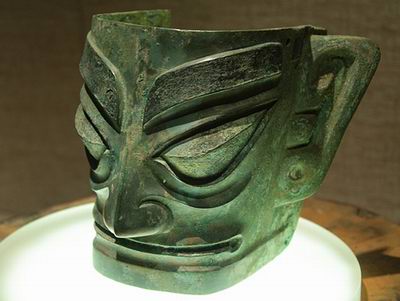 hengdu in the last period of Tang Dynasty. There were important vegetables market, silkworm market and grass silkworm. They distributed the village in neighborhood to gather the city. There are many authors in Chengdu in Tang Dynasty. Many famous poets such as Li Bai, Du Pu, Wang Bo, Lu Zhaolin, Gao Shi, Chen Shen, Xue Tao, Li Shangyin, Yong Tao, Kang Su and so on visited for short time in Chengdu. Chengdu developed many tour divine spots such as Kaimohe Pond, the Flowers Pond and so on. The Jianyuan Temple was built up in the north outside the city in the period of Zhenguan, it was changed Zhaojue Temple in the period of Dazhong in Tang Dynasty and it was called the first bush of the west of Sichuan.
hengdu in the last period of Tang Dynasty. There were important vegetables market, silkworm market and grass silkworm. They distributed the village in neighborhood to gather the city. There are many authors in Chengdu in Tang Dynasty. Many famous poets such as Li Bai, Du Pu, Wang Bo, Lu Zhaolin, Gao Shi, Chen Shen, Xue Tao, Li Shangyin, Yong Tao, Kang Su and so on visited for short time in Chengdu. Chengdu developed many tour divine spots such as Kaimohe Pond, the Flowers Pond and so on. The Jianyuan Temple was built up in the north outside the city in the period of Zhenguan, it was changed Zhaojue Temple in the period of Dazhong in Tang Dynasty and it was called the first bush of the west of Sichuan.
Chengdu was glory the economic and culture are more flourishing in the period of Song Dynasty and Yuan Dynasty. The silk industry scale was extension, the species increased, the pattern of brocade in Chengdu were from 10 kinds in Tang Dynasty to develop more than 40 kinds in Song Dynasty, can knit a horse, flowing water flying fish, all flowers peacock, satisfied peony...etc. new pattern, Chengdu handed over the silk merchandise up annually, which have over 70% of the total amount of the whole country to han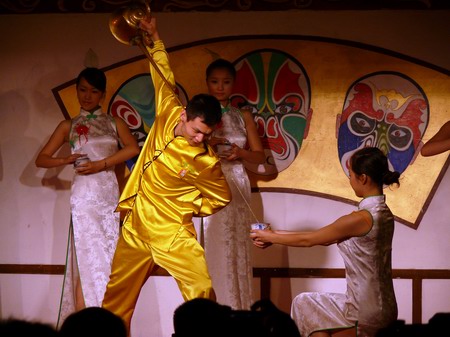 d up. The level of making papers was very high in Chengdu. The government of Tang Dynasty had been ruled that the papers which were used in the national library must use the Ma papers which were made in Chengdu. There were the special silkworm market, medicine market, the flower market and light meeting around the Chengdu city in the period of Tang Dynasty and Song Dynasty. Because the business was flourishing, Jiaozi which was the earliest banknotes of world appeared in Chengdu. In the period of Renzhong in North Song Dynasty, the government established the office Jiaozi business in Yi State which is Chengdu now, printed and published Jiaozi by government.
d up. The level of making papers was very high in Chengdu. The government of Tang Dynasty had been ruled that the papers which were used in the national library must use the Ma papers which were made in Chengdu. There were the special silkworm market, medicine market, the flower market and light meeting around the Chengdu city in the period of Tang Dynasty and Song Dynasty. Because the business was flourishing, Jiaozi which was the earliest banknotes of world appeared in Chengdu. In the period of Renzhong in North Song Dynasty, the government established the office Jiaozi business in Yi State which is Chengdu now, printed and published Jiaozi by government.
After the period of Tang Dynasty and Song Dynasty, Chengdu became the politics, economy, military, cultural center of Sichuan and the whole southwest region. The government of Ming Dynasty established office in Sichuan and Chengdu. Sichuang was named Sichuan Province by Shunzhi Emperor in 1654. In 1922, the city prepared and plan the place changed name to the city office. In 1928, the city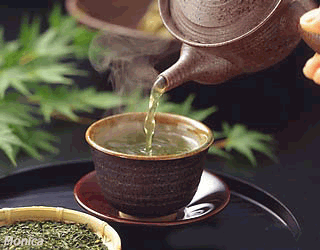 government was established, citizen's government place the city governed the city for the province and Sichuan province provincial capital. On December 27th in 1949, Chengdu was relieved; start to go the office located for the west of Sichuan. In 1952, canceled to go the office, recover the Sichuan province set up to make, Chengdu has been the capital of Sichuan Province. In February of 1989, it was granted by State Department, the economy and society development plan of Chengdu plan at nation in practice the single row, possessing the province-class economy management legal power, Chengdu became one of the 14 plan single row cities in the whole country.
government was established, citizen's government place the city governed the city for the province and Sichuan province provincial capital. On December 27th in 1949, Chengdu was relieved; start to go the office located for the west of Sichuan. In 1952, canceled to go the office, recover the Sichuan province set up to make, Chengdu has been the capital of Sichuan Province. In February of 1989, it was granted by State Department, the economy and society development plan of Chengdu plan at nation in practice the single row, possessing the province-class economy management legal power, Chengdu became one of the 14 plan single row cities in the whole country.
Today the industrial base is very broad, including light and heavy manufacturing, aluminum smelting and chemicals. The textile industry remains important, with cotton and wool milling added to the traditional manufacturing of silk brocade and satin.
Today it is the headquarters of the Chengdu Military Region.
On May 12, 2008, a 8.0 magnitude earthquake struck causing damage to the area, killing about 80,000 people and injuring 26,413 in the area as of May 24, 2008. 4021 of the casualties and most of the property damage were from Dujiangyan and Pengzhou, two suburban cities of Chengdu. While 75 kilometers (48 miles) from the epicenter, the urban area did not suffer any discernible damage.


